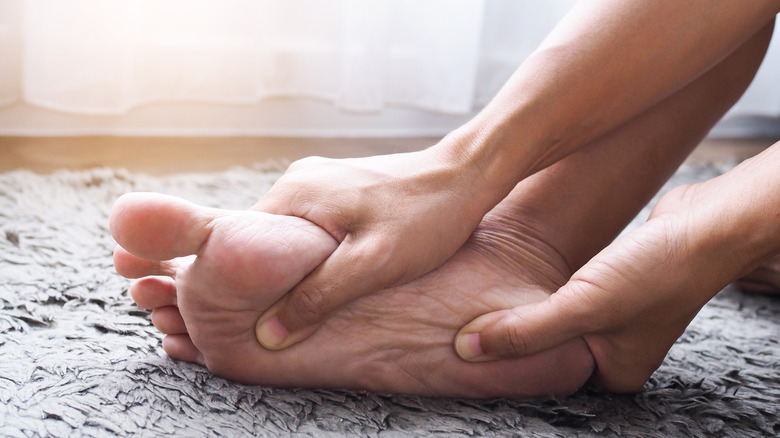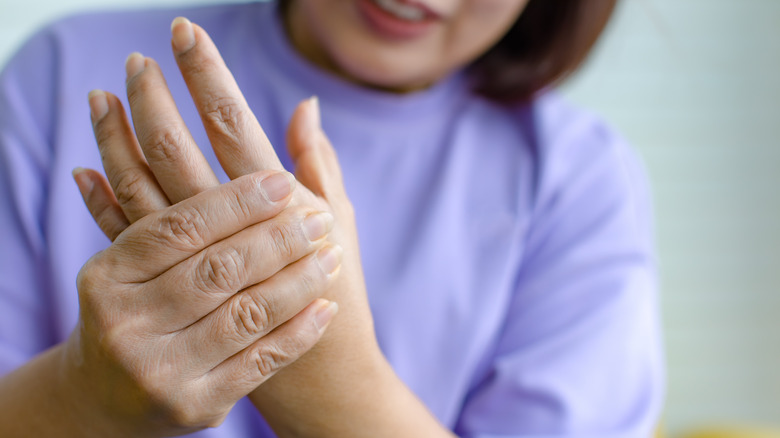The First Thing You Should Do When Your Hands Or Feet Fall Asleep
Falling asleep can be peaceful, relaxing, and a welcome send-off at the end of a full day. But a body part falling asleep? Well, that's anything but peaceful. The tingling, numbness, burning, and itching that comes with the pins and needles sensation of a limb fast asleep is known as paresthesia (via Verywell Health).
Most often affecting the arms or the legs, symptoms are usually experienced in one limb rather than both simultaneously, and bouts of temporary paresthesia generally last less than 30 minutes (per Verywell Health). According to the National Institute of Neurological Disorders and Stroke, paresthesia occurs when a nerve experiences ongoing pressure placed upon it. Chronic paresthesia can accompany certain health conditions like diabetes, stroke, multiple sclerosis (MS), or a herniated disk. However, more often than not, it's not a serious health concern, and there are simple things you can do to wake up those sleepy body parts.
Why our limbs feel numb and tingly
Professor of kinesiology and health education at the University of Texas at Austin, Lawrence Abraham, explains the relationship between our nerves and the sensations of numbness we feel when a limb falls asleep, stating, "If there's compression of the sensory nerves, we simply don't get any information, so it feels numb. We might feel a thud—a mechanical transmission of force telling us we've run into something—but we don't really know where we're touching it," (via Slate).
In response, the prickling sensation that follows when our hands or feet fall asleep is typically not a cause for concern, but merely a signal sent by the brain that action needs to be taken to prevent tissue death in the affected area. Therefore, the first thing that needs to be done to alleviate pressure is often just shifting positions, according to Harvard Health Publishing.
Tips to help quickly wake up sleeping limbs
Because the discomfort may not immediately subside upon releasing the pressure, stretching, bending, or rotating the affected area can help alleviate discomfort, according to Healthline. Additionally, you can massage the affected area to activate the muscles and nerves. If your hand or foot is particularly stubborn, experts at Medical Daily suggest giving yourself a massage to prompt circulation, relax muscles, and open neural pathways. You can also sway to loosen up the body further and promote circulation.
After you've gotten some stretching and massaging in, if it's your foot that's fallen asleep, you can try carefully moving about the room as sensations return to normal. Just be sure to save this method for last, as walking around while your foot is still numb can lead to injury. If you find that instances of paresthesia are recurring or lasting for longer than 30 minutes, you may want to consult with a physician (via Verywell Health).



